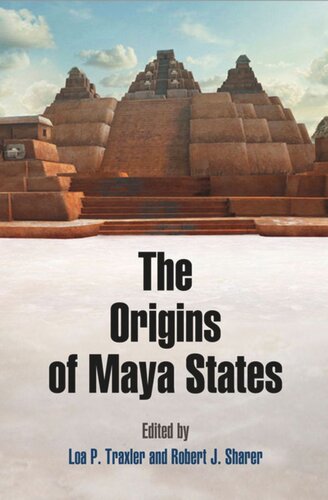

Most ebook files are in PDF format, so you can easily read them using various software such as Foxit Reader or directly on the Google Chrome browser.
Some ebook files are released by publishers in other formats such as .awz, .mobi, .epub, .fb2, etc. You may need to install specific software to read these formats on mobile/PC, such as Calibre.
Please read the tutorial at this link: https://ebookbell.com/faq
We offer FREE conversion to the popular formats you request; however, this may take some time. Therefore, right after payment, please email us, and we will try to provide the service as quickly as possible.
For some exceptional file formats or broken links (if any), please refrain from opening any disputes. Instead, email us first, and we will try to assist within a maximum of 6 hours.
EbookBell Team

0.0
0 reviewsThe Pre-Columbian Maya were organized into a series of independent kingdoms or polities rather than unified into a single state. The vast majority of studies of Maya states focus on the apogee of their development in the classic period, ca. 250-850 C.E. As a result, Maya states are defined according to the specific political structures that characterized classic period lowland Maya society. The Origins of Maya States is the first study in over 30 years to examine the origins and development of these states specifically during the preceding preclassic period, ca. 1000 B.C.E. to 250 C.E.
Attempts to understand the origins of Maya states cannot escape the limitations of archaeological data, and this is complicated by both the variability of Maya states in time and space and the interplay between internal development and external impacts. To mitigate these factors, editors Loa P. Traxler and Robert J. Sharer assemble a collection of essays that combines an examination of topical issues with regional perspectives from both the Maya area and neighboring Mesoamerican regions to highlight the role of interregional interaction in the evolution of Maya states. Topics covered include material signatures for the development of Maya states, evaluations of extant models for the emergence of Maya states, and advancement of new models based on recent archaeological data. Contributors address the development of complexity during the preclassic era within the Maya regions of the Pacific coast, highlands, and lowlands and explore preclassic economic, social, political, and ideological systems that provide a developmental context for the origins of Maya states.
Contributors: Marcello A. Canuto, John E. Clark, Ann Cyphers, Francisco Estrada-Belli, David C. Grove, Norman Hammond, Richard D. Hansen, Eleanor King, Michael Love, Simon Martin, Astrid Runggaldier, Robert Sharer, Loa Traxler.